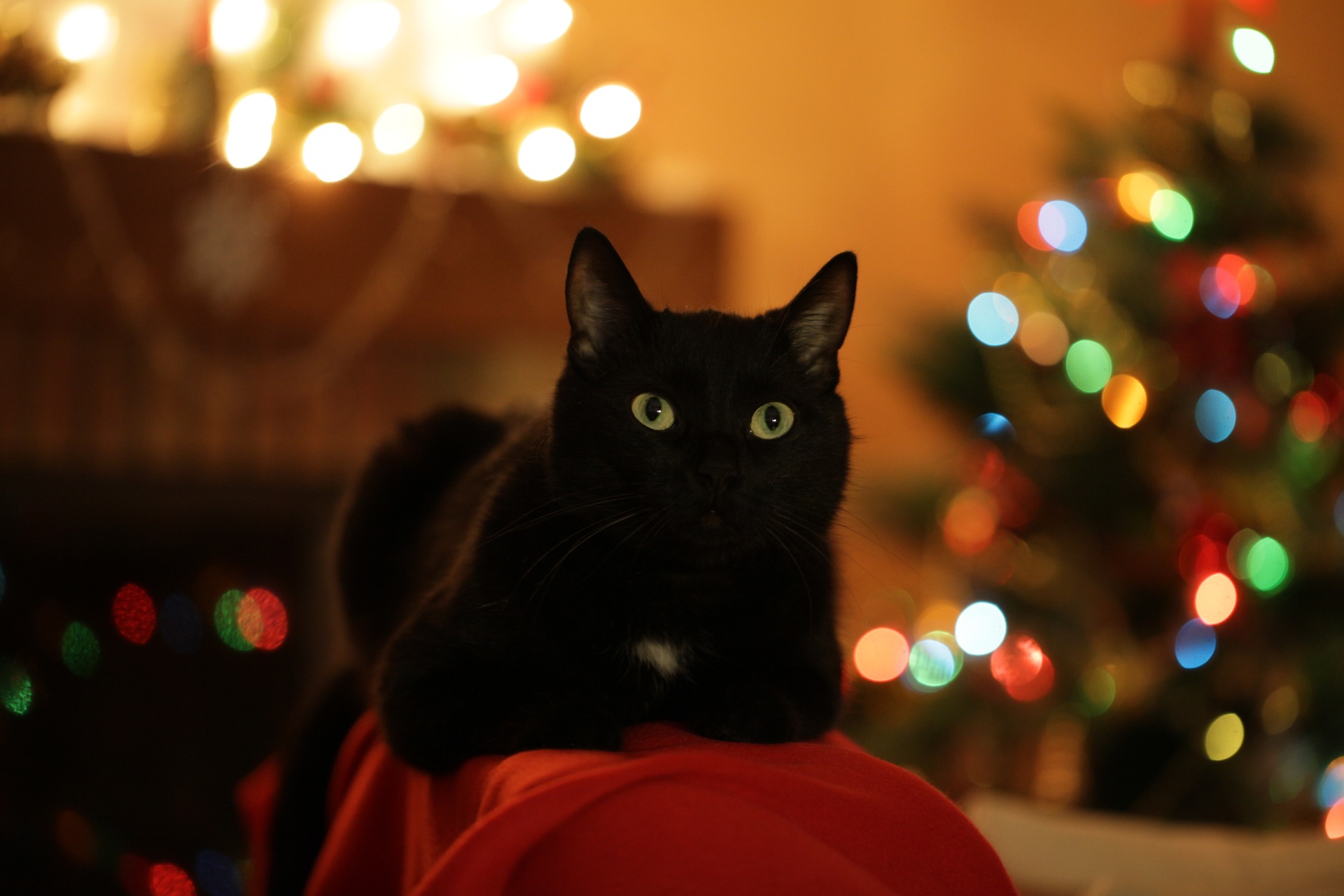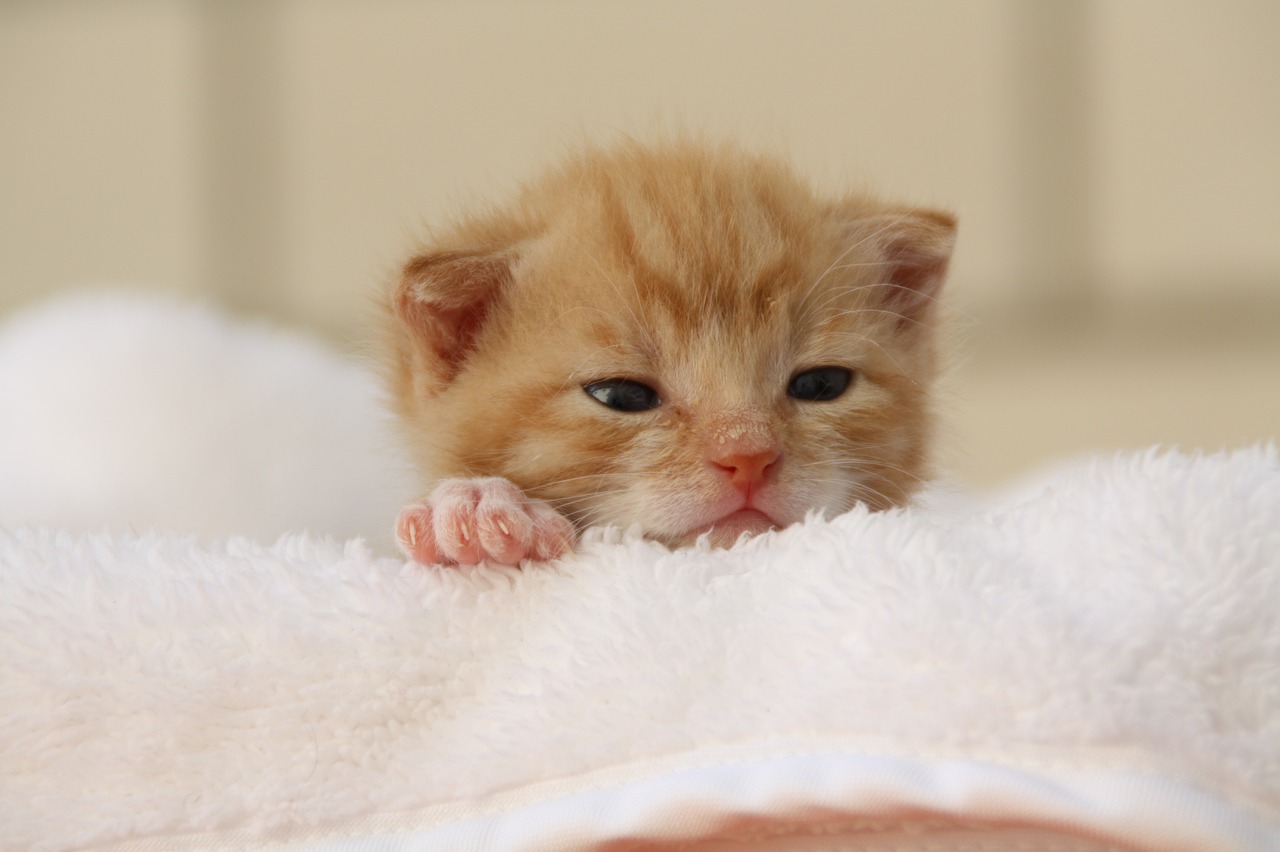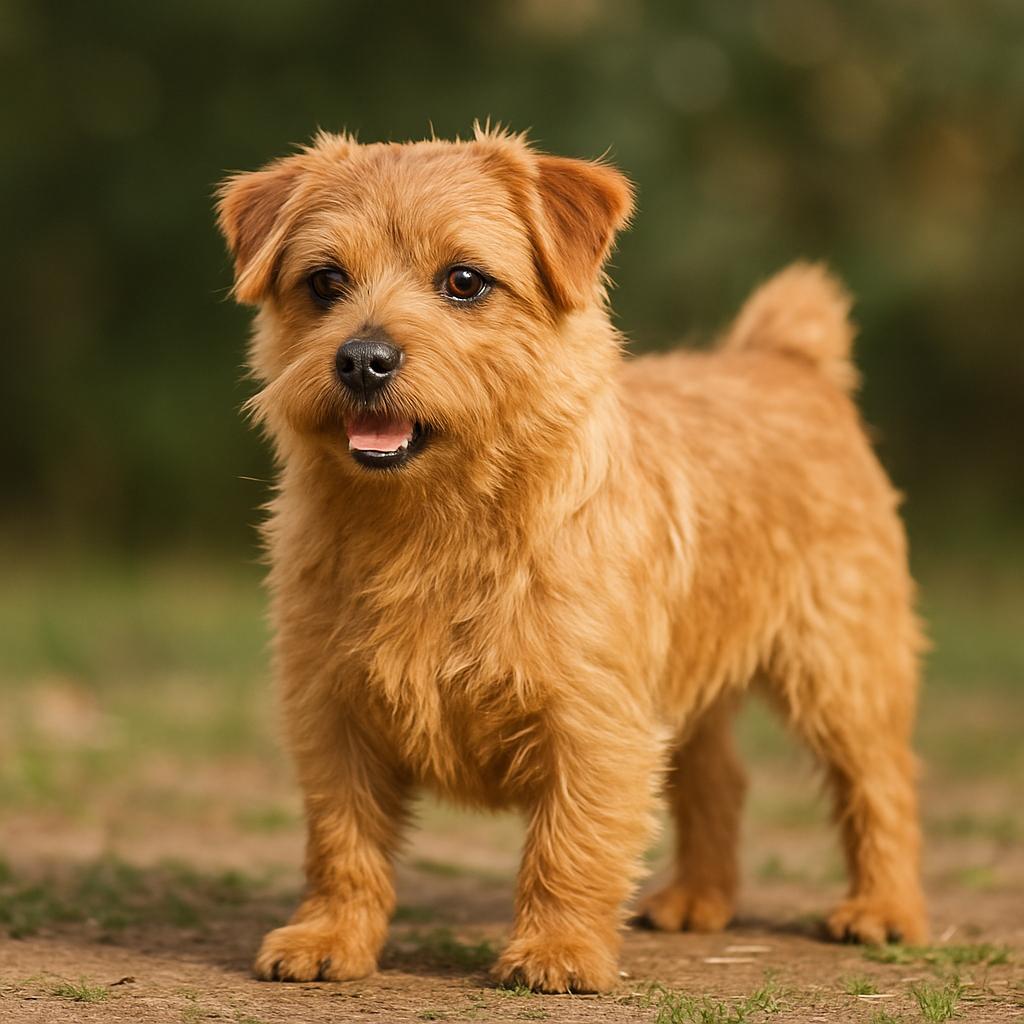
The Norfolk Terrier and Norwich Terrier Dog Breeds
The Norfolk Terrier breed originated in England, specifically in the county of Norfolk, from which it takes its name. It is a fairly recent breed, originating between the 19th and 20th centuries. Its origins are rather obscure, although it is part of the Terrier family; it is thought to have come from crossbreeding between dogs belonging to local farmers.
However, a distinction must be made: initially there was only one breed, which was divided into two groups, one with ears that hung down and the other with ears that stood upright. In fact, this was the only difference between the two types of dogs. Both their structure and their character and characteristics were perfectly identical.
Around 1960, the breed was recognised and two different names were given to the two different types. The Norfolk Terrier was the one with drooping ears, while the one with erect ears was called the Norwich Terrier. This article will cover both types, because, as I said before, there is no difference apart from the ears.
The first specimen to display the original characteristics was a male named Rags, from whom all specimens of this breed are descended. The name was also changed recently. In the 19th century, he was referred to as Cantab, which was short for Cantabrigian, a reference to the students of Cambridge. In fact, at that time, it was very fashionable among students at that university to have a Norfolk Terrier.
They arrived in America in the 19th century, and it was after the First World War that an Irish trader, Grant Jones, began buying and reselling the first specimens in the United States, where they were called Jones Terriers until they were officially recognised, which brought the two branches together.
In its place of origin, this dog was used on farms, where it was very skilled at catching mice and other unwanted animals. However, it was also considered an excellent companion dog due to its very sweet nature. It was also used as a guard dog.
Character of the Norfolk Terrier and Norwich Terrier dog breeds
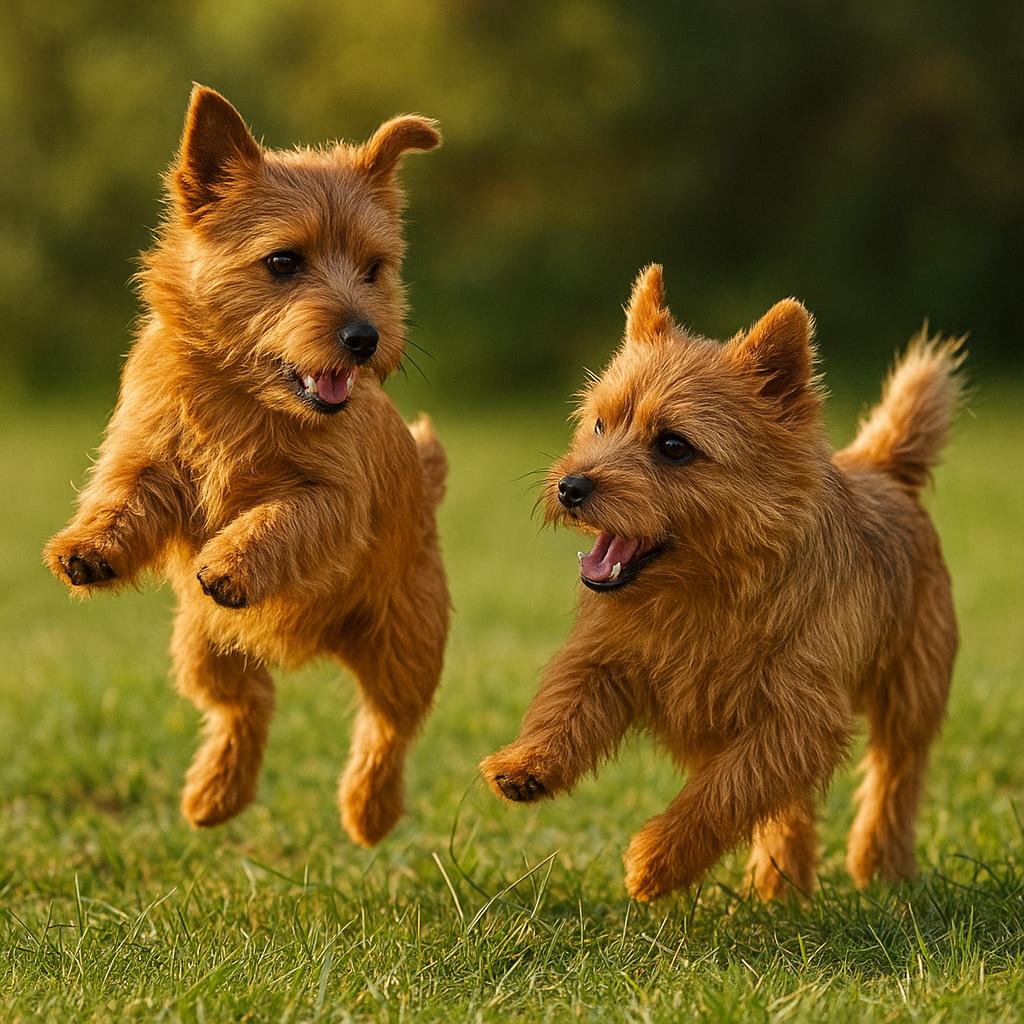
It is an excellent companion dog, sociable but never intrusive. It loves being indoors with its family and also gets on well with children. He does not like to be left alone and is prone to suffering from loneliness. He also gets on well with other dogs; if raised together, he can establish a good relationship with cats, but never with hamsters and rabbits, which he sees as prey.
He needs a lot of exercise, so you should expect to take him on a couple of long walks every day. If it has access to a garden, its main purpose is to hunt small animals such as rodents and dig holes.
Appearance of the Norfolk Terrier and Norwich Terrier dog breeds
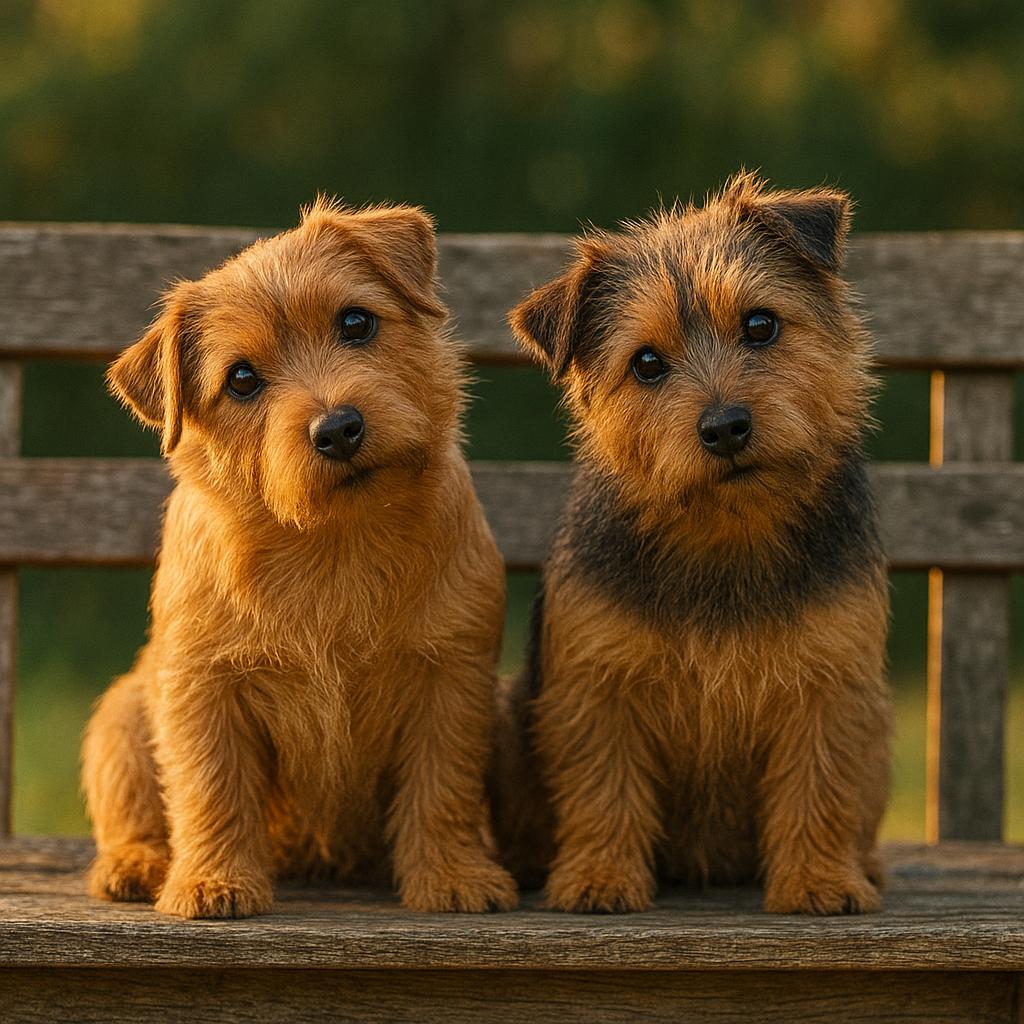
The head is rounded and the muzzle is distinctive: it is wedge-shaped. The eyes are slightly oval, dark, usually brown or black in colour. The ears of the Norfolk are triangular in shape, slightly blunt at the tips and fall loosely towards the cheeks. In the Norwich, however, they are erect.
Its coat is hard and bristly to the touch. It is thick and very dense and accompanied by a very thick and dense undercoat. The hair is longer on the neck and shoulders, while on the ears and head it is short and smooth. The colours vary; many shades are allowed, from beige to black, red to salt and pepper, but there are also specimens with white patches.
Care and health of the Norfolk Terrier and Norwich Terrier dog breeds
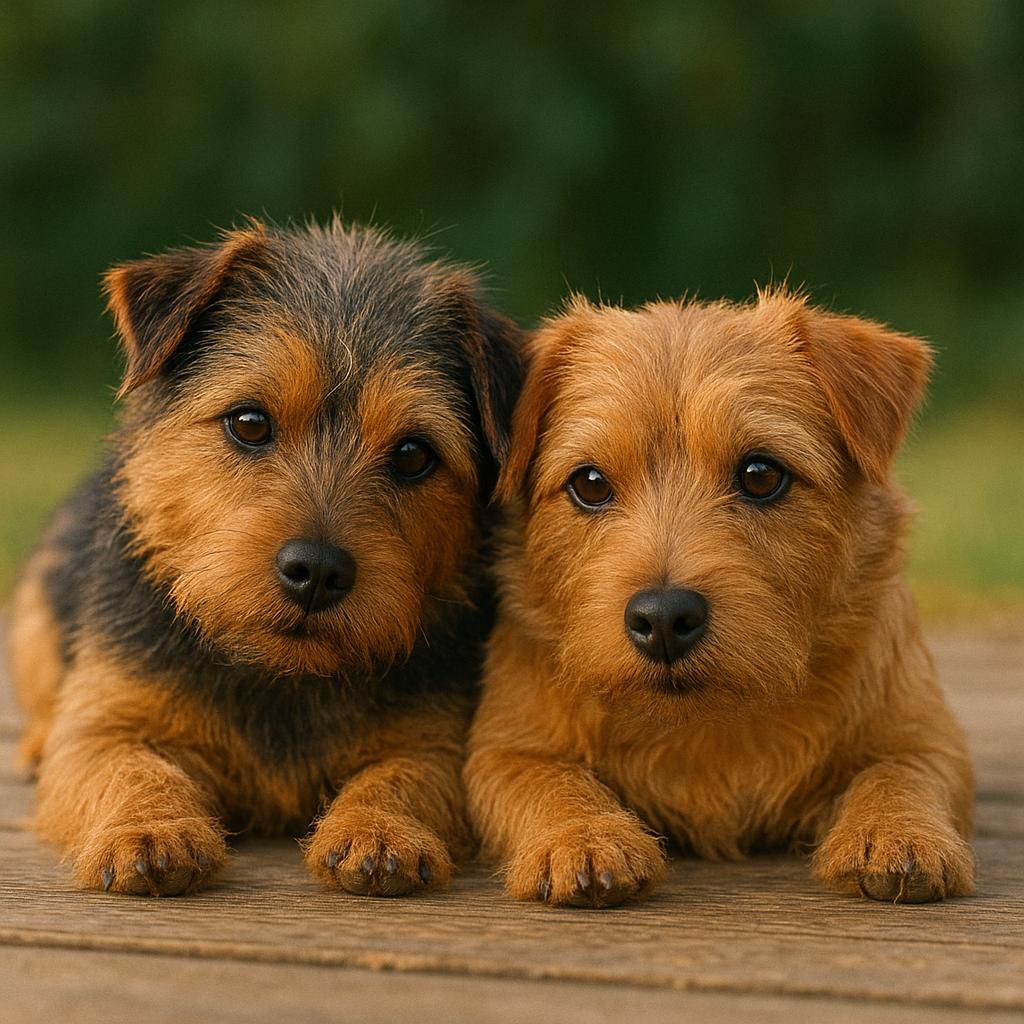
They have a life expectancy of around 13 years. In hot weather, it is best to move physical activities to cooler times of the day. Due to both their character and health, they cannot live outdoors.
As for coat care, it is best to brush them at least once a week to keep their coat shiny and clean.
There are no special dietary requirements to bear in mind, but be careful not to let it put on weight, as its small build means it is at risk of developing serious illnesses.

